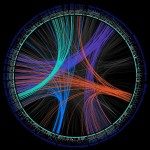Lien vers Pubmed [PMID] – 20229500
Am. J. Phys. Anthropol. 2010 Aug;142(4):579-89
The name “Wampanoag” means “Eastern People” or “People of the First Light” in the local dialect of the Algonquian language. Once extensively populating the coastal lands and neighboring islands of the eastern United States, the Wampanoag people now consist of two federally recognized tribes, the Aquinnah and Mashpee, the state-recognized Seaconke Wampanoag tribe, and a number of bands and clans in present-day southern Massachusetts. Because of repeated epidemics and conflicts with English colonists, including King Philip’s War of 1675-76, and subsequent colonial laws forbidding tribal identification, the Wampanoag population was largely decimated, decreasing in size from as many as 12,000 individuals in the 16th century to less than 400, as recorded in 1677. To investigate the influence of the historical past on its biological ancestry and native cultural identity, we analyzed genetic variation in the Seaconke Wampanoag tribe. Our results indicate that the majority of their mtDNA haplotypes belongs to West Eurasian and African lineages, thus reflecting the extent of their contacts and interactions with people of European and African descent. On the paternal side, Y-chromosome analysis identified a range of Native American, West Eurasian, and African haplogroups in the population, and also surprisingly revealed the presence of a paternal lineage that appears at its highest frequencies in New Guinea and Melanesia. Comparison of the genetic data with genealogical and historical information allows us to reconstruct the tribal history of the Seaconke Wampanoag back to at least the early 18th century.

